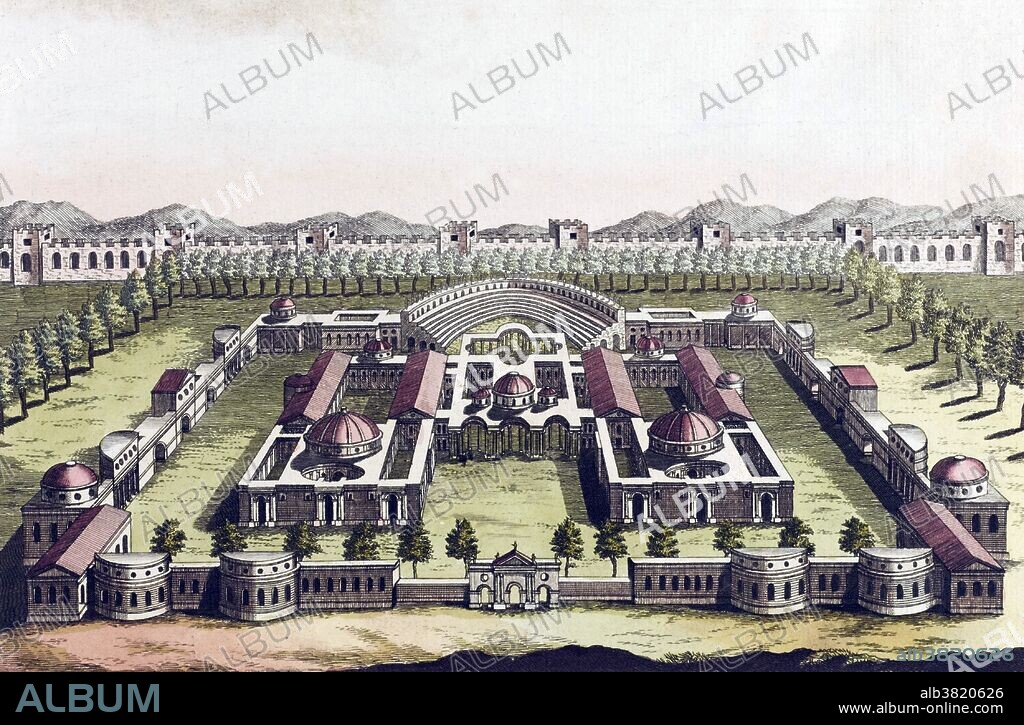alb3820626
Baths of Diocletian

|
Add to another lightbox |
|
Add to another lightbox |



Title:
Baths of Diocletian
Caption:
The Baths of Diocletian (Thermae Diocletiani) were public baths in Rome, in what is now Italy. Named after emperor Diocletian's Baths and built from 298 to in 306, they were the largest and most impressive of the imperial baths. The project was originally commissioned by Maximian upon his return to Rome in the autumn of 298 and was continued after his and Diocletian's abdication under Constantius, father of Constantine. Thermae usually refers to the large imperial bath complexes, while balneae were smaller-scale facilities, public or private, that existed in great numbers throughout Rome. Most Roman cities had at least one, if not many, such buildings, which were centers not only for bathing, but socializing. Roman bath-houses were also provided for private villas, town houses, and forts. They were supplied with water from an adjacent river or stream, or more normally, by an aqueduct. The water would be heated by a log fire before being channelled into the hot bathing rooms. Engraving appeared in "Costumes, manners, customs and material culture in Antiquity and the Middle Ages" by Robert von Spalart, 1804-11.
Credit:
Album / Science Source / Wellcome Images
Releases:
Model: No - Property: No
Rights questions?
Rights questions?
Image size:
4500 x 2955 px | 38.0 MB
Print size:
38.1 x 25.0 cm | 15.0 x 9.8 in (300 dpi)
Keywords:
ANCIENT ROMAN • ANCIENT ROME • ANCIENT • ANTIQUITY • ART • ARTWORK • BATH COMPLEX • BATH: ROMAN • BATHS OF DIOCLETIAN • CALIDARIUM, ROMAN BATH • CELEBRITY • CULTURE • DIOCLETIAN'S BATHS • DIOCLETIANS BATHS • DRAWING • EMPEROR • ENGRAVING • FACILITY • FAMOUS • HISTORIC • HISTORICAL • HISTORY • HYGIENE • HYGIENIC • ILLUSTRATION • IMPERIAL BATHS • IMPORTANT • NOTABLE • PUBLIC BATH • ROBERT VON SPALART • ROMAN BATH HOUSE • ROMAN BATH • ROMAN BATH-HOUSE • ROMAN BATHHOUSE • ROMAN BATHS • ROMAN EMPIRE • TEPIDARIUM, ROMAN BATH • THERMAE DIOCLETIANI • THERMAE • WELL-KNOWN
 Pinterest
Pinterest Twitter
Twitter Facebook
Facebook Copy link
Copy link Email
Email

